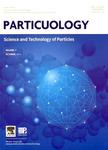Preparation and characterization of high-reactivity explosive-based nano-boron microspheres
作者机构:North Univ China Sch Mat Sci & Engn Taiyuan 030051 Peoples R China Jinxi Grp Shanxi Jiangyang Chem Co Ltd Taiyuan 030051 Peoples R China China Ordnance Inst Sci & Technol Beijing 100089 Peoples R China North Univ China Sch Environm & Safety Engn Taiyuan 030051 Peoples R China
出 版 物:《PARTICUOLOGY》 (颗粒学报(英文版))
年 卷 期:2024年第93卷第10期
页 面:125-136页
核心收录:
学科分类:07[理学] 0817[工学-化学工程与技术] 070203[理学-原子与分子物理] 0805[工学-材料科学与工程(可授工学、理学学位)] 0702[理学-物理学]
基 金:Weapons and Equipment Advance Research Fund
主 题:Nano-boron CL-20 PETN Electrospraying Ignition and combustion NANOPARTICLES COMBUSTION
摘 要:Boron nanoparticles, with their remarkably high gravimetric and volumetric calorific values, emerge as the most promising fuel in energetic fields. However, challenges such as susceptibility to oxidation, high ignition temperature, and low combustion efficiency have constrained their further applications. In this study, we fabricated high explosives based nano-boron microspheres with uniform size using the electrostatic spray method, in which the boron nanoparticles and high explosives (CL-20 or PETN) are closely bonded together by fluorinated polymer (F-2602) and evenly distributed. The results indicated that the microspheres exhibited high sphericity and showed an enhanced antioxidant capability. The addition of high-energy explosives not only reduced the thermal oxidation temperature of nano-boron powder within the microspheres but also significantly enhanced the pressurization rate. Additionally, the microspheres with added high-energy explosives released more energy during the combustion process. Compared to physically mixed samples, electrostatically sprayed microspheres with a uniform microstructure still exhibited higher reactivity. Therefore, the design and synthesis of microspheres with controllable structures using the electrostatic spray method show promising application prospects. (c) 2024 Chinese Society of Particuology and Institute of Process Engineering, Chinese Academy of Sciences. Published by Elsevier B.V. All rights are reserved, including those for text and data mining, AI training, and similar technologies.



